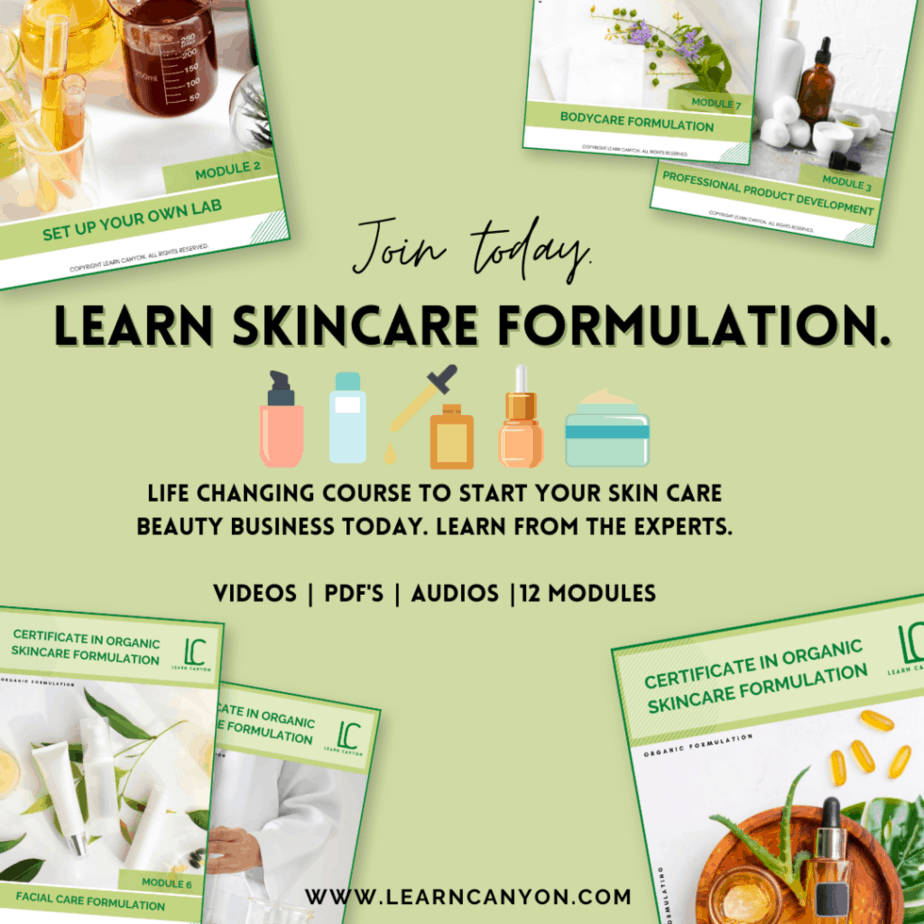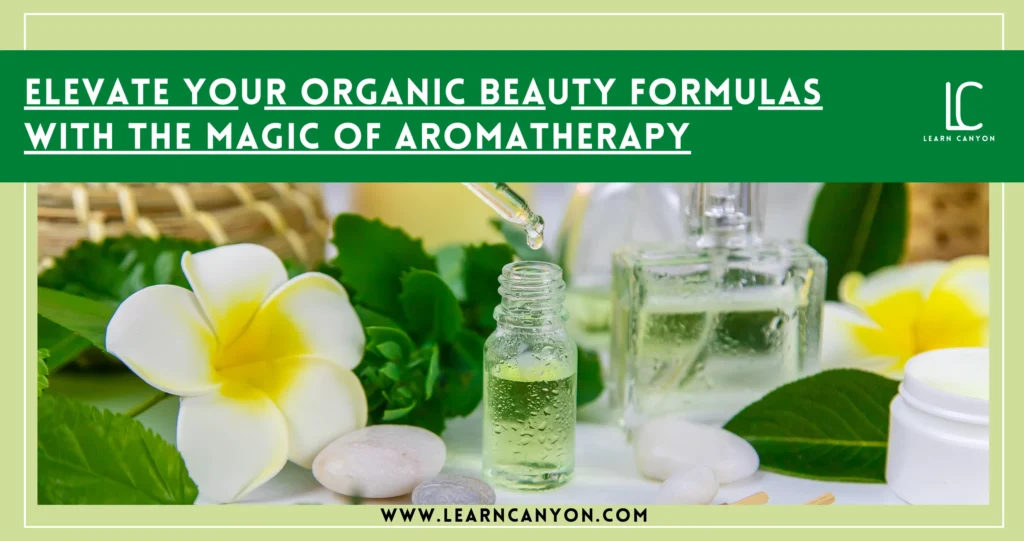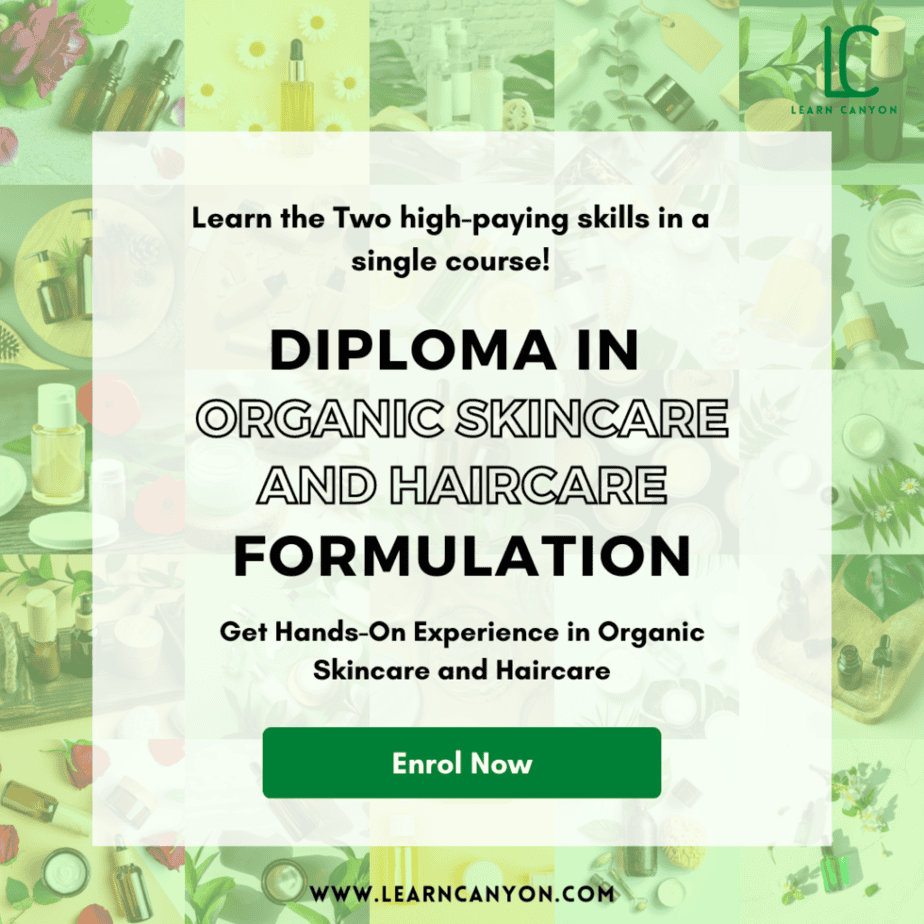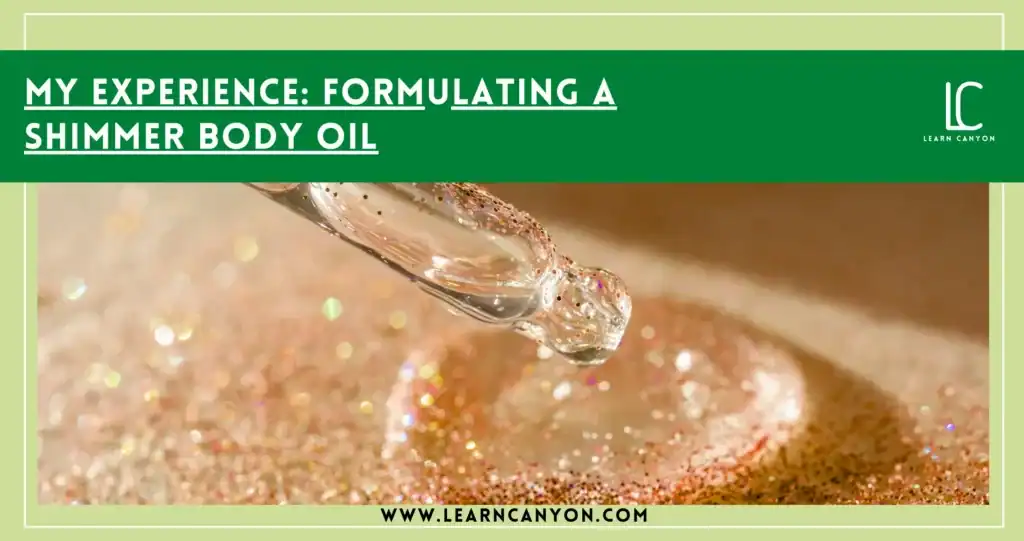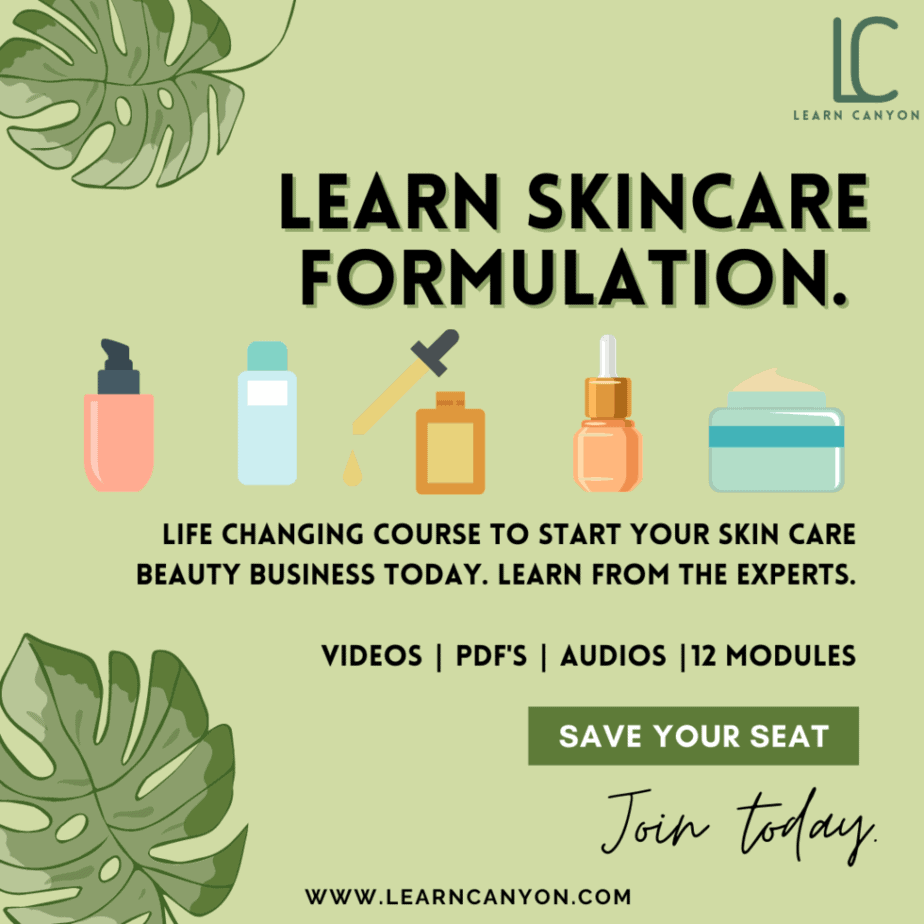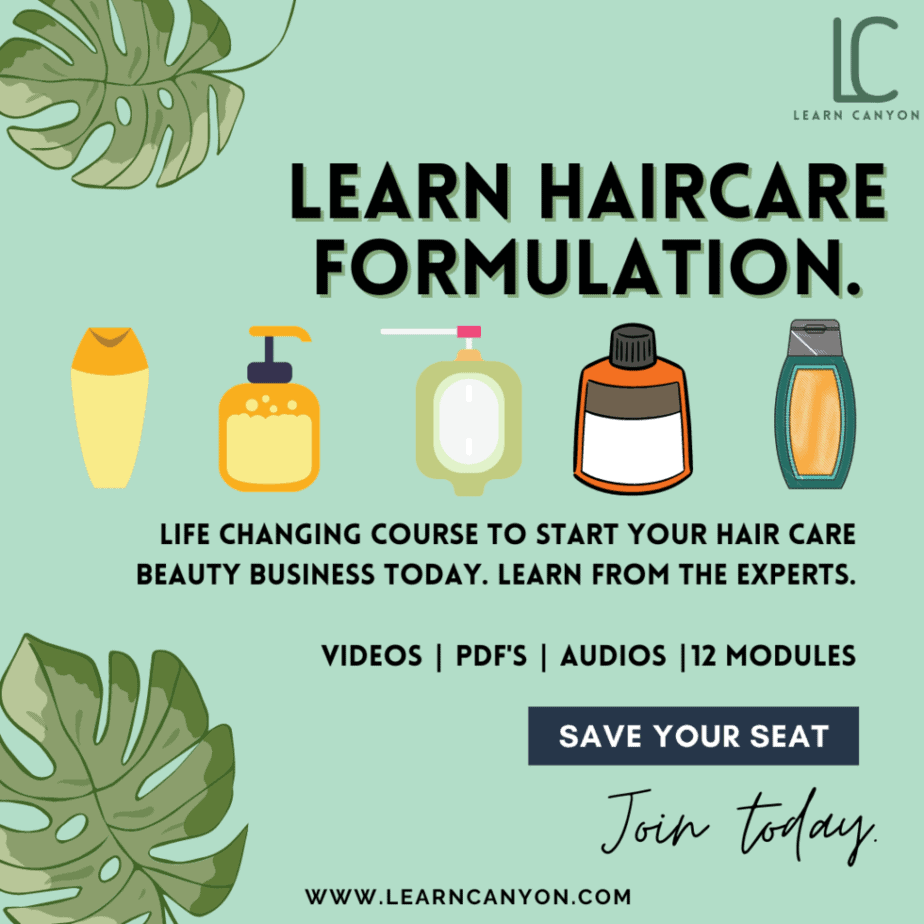If there’s one thing I’ve learned over the years as a professional formulator, it’s that skincare isn’t just about results, it’s about the experience. The texture, the feel, the scent… they all matter. That’s where aromatherapy comes in.
Aromatherapy isn’t just a trend, it’s a timeless art rooted in ancient wellness traditions. When thoughtfully integrated into organic beauty formulations, it adds a whole new layer of therapeutic benefit. Think of it as nature’s way of nourishing not just the skin, but the soul too.
In the world of clean, conscious beauty, essential oils do more than smell good, they support emotional well-being, offer real skin benefits, and create a sensorial ritual that your customers will look forward to every single day. And when you formulate with purpose, using botanically pure ingredients, the magic of aromatherapy blends beautifully with the science of skincare.
Let’s dive into how you can harness this synergy to elevate your organic beauty creations.
What is Aromatherapy and Why It Matters in Beauty?
Let’s start with the basics, what exactly is aromatherapy?
In simple terms, aromatherapy is the therapeutic use of essential oils extracted from plants, flowers, leaves, roots, bark, even resins. These aromatic compounds are far more than just pleasant-smelling liquids. They carry the life force of plants, rich in active compounds that can calm, energize, uplift, or even purify, depending on the oil and how it’s used.
But here’s the beautiful part: aromatherapy doesn’t just work on a physical level, it works on an emotional and energetic level too. When used mindfully in skincare, it turns a routine into a ritual. Imagine applying a moisturizer that not only nourishes dry skin but also soothes your anxious mind. That’s the magic we’re talking about.
As organic beauty formulators, we’re not just blending oils, we’re creating experiences. Aromatherapy helps us align our formulations with a holistic view of wellness. It’s a gentle yet powerful way to connect the body, mind, and senses through every drop.
In an industry that’s saturated with synthetic fragrances and one-size-fits-all solutions, aromatherapy offers a personal, plant-powered alternative, one that resonates deeply with the conscious consumer.
And the best part? When you use the right essential oils for the right purpose, whether it’s calming inflamed skin, supporting acne-prone complexions, or boosting glow, you not only deliver results but create deep emotional resonance with your products.
Understanding Essential Oils:
Let’s take a moment to truly appreciate essential oils, these aren’t just fancy scents in pretty bottles. As a formulator, I see them as concentrated plant intelligence. They are, quite literally, the essence of a plant’s healing power, extracted through careful distillation or cold pressing, drop by drop.
Each essential oil is made up of dozens (sometimes hundreds!) of chemical compounds, which work synergistically to support skin health and emotional balance. For example, lavender oil isn’t just calming because it smells nice, it contains linalool and linalyl acetate, which help soothe both the skin and the nervous system. That’s science and nature holding hands!
But, and this is important, not all essential oils are created equal. Purity matters. Sourcing matters. Sustainability definitely matters. As professionals, we need to ensure we’re using oils that are ethically harvested, properly stored, and unadulterated. I always say: if you wouldn’t use it in your own self-care ritual, don’t put it in a product for someone else.
And just as powerful as they are, essential oils must be respected. They’re potent. Too much can cause skin irritation or sensitization. That’s why understanding their chemistry, proper dilution, and safe application is key, especially in organic beauty, where we lean into nature’s offerings with full responsibility.
In the next section, I’ll walk you through how to match the right essential oils to specific skincare needs. Because yes, they’re beautiful, but they’re also incredibly functional when used with intention.
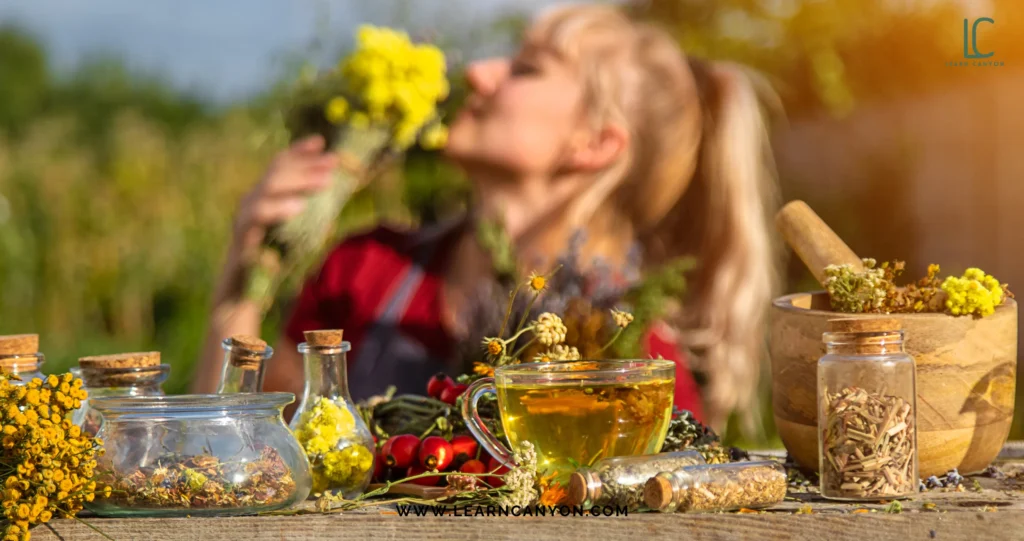
Choosing the Right Oils for Specific Skincare Needs
Here’s where the real magic begins, matching the right essential oils to the right skin concerns.
As a professional formulator, one of the most exciting parts of creating a product is choosing oils that don’t just smell divine, but do something meaningful for the skin. And trust me, with essential oils, a few drops can make a world of difference, when chosen intentionally.
Let’s look at some common skincare needs and which essential oils work best for each:
For Dry & Sensitive Skin
These skin types need extra love and gentleness.
- Lavender – Calms irritation, promotes healing
- Chamomile (German or Roman) – Soothes redness and inflammation
- Sandalwood – Deeply moisturizing and grounding
- Rose Otto – Luxurious and nurturing, great for mature dry skin
Tip: Always blend these with nourishing carrier oils like jojoba, calendula-infused oil, or oat oil for an extra soothing touch.
For Oily & Acne-Prone Skin
This is where you need oils with purifying and balancing properties.
- Tea Tree – Antibacterial and clarifying
- Geranium – Regulates sebum and supports hormonal balance
- Clary Sage – Balances oil production
- Lemongrass – Tones the skin and tightens pores
Important: Use these in moderation and ensure proper dilution, especially with stronger oils like tea tree and lemongrass.
For Aging & Mature Skin
The goal here is to firm, regenerate, and support collagen naturally.
- Frankincense – Known as the king of essential oils for skin rejuvenation
- Myrrh – Supports skin elasticity and healing
- Carrot Seed – Rich in antioxidants and skin-renewing properties
- Rose – Beautifully hydrating, also uplifts mood
Formulator’s note: These oils work wonders when blended with carriers like rosehip, pomegranate seed oil, or sea buckthorn.
For Dull, Tired, or Uneven Skin
Let’s bring back that glow!
- Neroli – Revives skin tone and promotes radiance
- Ylang Ylang – Softens and balances without clogging
- Sweet Orange – Brightens the skin and uplifts the spirit
- Helichrysum – Great for marks and skin tone correction
Each essential oil has its own personality, just like your clients. The secret? Learn to pair their energetic profile with the skin’s physical needs. It’s part science, part art… and all heart.
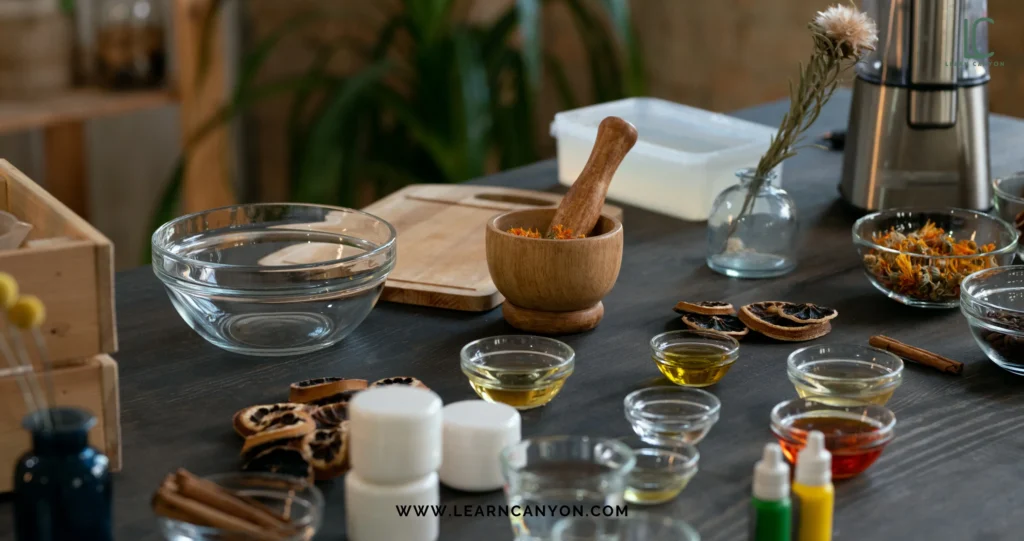
Formulating with Aromatherapy: Tips & Guidelines
Now that we’ve explored the why and the what, let’s get into the how, because as much as we love essential oils, we have to respect their potency. Formulating with aromatherapy is a beautiful practice, but it calls for precision, patience, and knowledge.
So let me walk you through some key tips and guidelines I live by when formulating with essential oils:
1. Respect the Dilution Rules
Essential oils are highly concentrated. Using too much can overwhelm the skin or even cause irritation, especially for sensitive users.
Here’s a general guideline:
- Face products: 0.25% to 1%
- Body products: 1% to 2%
- Bath products: 1% to 3% (always in a dispersant!)
- Spot treatments: Up to 5%, but only in rinse-off or localized formulations
Always start low and adjust based on the skin type and product category. Remember, subtle is powerful in aromatherapy.
2. Pair with the Right Carrier Oils
Essential oils are lipophilic, meaning they dissolve best in oils and butters. Choose carriers that not only dilute the EO safely but also support your formulation goals.
A few favorites:
- Jojoba – Skin-identical and great for balancing
- Rosehip – Regenerating and rich in pro-vitamin A
- Sweet Almond – Light, nourishing, and ideal for most skin types
- Calendula-infused oil – Perfect for sensitive or inflamed skin
The carrier oils set the tone, while essential oils bring in the therapeutic aroma and active benefits.
3. Blend with Purpose
Instead of throwing in every favorite oil, ask: What’s the purpose of this blend?
Create synergy by blending oils that complement each other in both aroma and function. For example:
- Lavender + Frankincense for calming and anti-aging
- Geranium + Clary Sage for balancing oily skin
- Rose + Sandalwood for deep hydration and heart-opening energy
I like to follow the top-middle-base note approach for a well-rounded aroma, like perfumery, but functional.
4. Think About Product Type & Stability
- Avoid heat when blending essential oils, add them during the cool-down phase.
- In emulsions or gels, blend oils with the oil phase, or solubilize them properly to prevent separation.
- Essential oils can accelerate oxidation in some formulas, so make sure to include antioxidants like Vitamin E (Tocopherol) or Rosemary Extract.
5. Know the Safety and Contraindications
Some essential oils aren’t suitable for certain users, pregnant women, children, or people with specific conditions. For instance:
- Avoid clary sage in pregnancy.
- Use phototoxic oils like bergamot or lemon only in rinse-off products unless they’re furanocoumarin-free.
- Always double-check IFRA guidelines when formulating for commercial use.
Formulating with aromatherapy isn’t just about what smells good, it’s about creating safe, effective, skin-loving products that connect with people on a deeper level.
Emotional Wellness Through Scent
Let’s be honest, we’ve all had those moments where a single scent transports us back in time or completely shifts our mood. That’s not magic. That’s the power of aromatherapy working on the limbic system, the part of our brain that controls emotions and memory.
As a formulator, I’ve always believed that skincare is about more than what we see in the mirror. It’s about how we feel. And when we bring intentional aromatherapy into our formulations, we don’t just create skin results, we create emotional experiences.

Scent as a Mood Shifter
Essential oils have the beautiful ability to influence our emotional state:
- Lavender and chamomile can soothe anxiety and promote calm.
- Citrus oils like sweet orange or grapefruit uplift and energize.
- Sandalwood and frankincense ground the mind and bring clarity.
- Rose and neroli comfort the heart and ease emotional tension.
These aren’t just poetic ideas, they’re backed by science. When inhaled, essential oil molecules stimulate olfactory receptors, which signal the brain to release neurotransmitters like serotonin and dopamine. It’s nature’s own nervous system support.
From Routine to Ritual
When we infuse this sensory element into skincare, we transform simple routines into moments of mindfulness. That 30 seconds of applying face oil? It becomes an act of grounding. That body butter after a shower? It turns into a hug in a jar.
In a world that’s always rushing, the gift of presence, through scent, is priceless.
Blending for Emotional Intentions
When I formulate, I always ask: How do I want the user to feel?
Here are a few of my favorite aromatherapy themes you can play with:
- Calm & Relaxation – Lavender, vetiver, bergamot, chamomile
- Uplift & Joy – Sweet orange, ylang ylang, mandarin, spearmint
- Focus & Clarity – Rosemary, eucalyptus, lemon, peppermint
- Comfort & Self-Love – Rose, neroli, sandalwood, geranium
These blends don’t just serve the skin, they nourish the spirit.
The emotional layer of skincare is often overlooked, but it’s what keeps people coming back to a product, not just for results, but for how it makes them feel.
Product Ideas Featuring Aromatherapy
Now that we’ve explored the magic and meaning behind aromatherapy, let’s talk about where to actually use it. Because once you understand the emotional and skin benefits of essential oils, the possibilities in organic beauty are endless!
Whether you’re formulating for your own brand, teaching students, or crafting custom blends for clients, here are some tried-and-true product types where aromatherapy truly shines:
1. Facial Oils & Serums
This is probably my favorite category to infuse with aromatherapy. Why? Because it’s intimate. The face is where people truly connect with themselves in the mirror, and a beautifully scented oil makes that moment feel like self-care, not just skincare.
Try this:
- A calming night serum with blue chamomile, lavender, and frankincense in a base of rosehip and jojoba.
- A glow-boosting morning oil with neroli, sweet orange, and carrot seed in squalane.
2. Body Butters & Balms
Thick, luxurious textures and warm scents, body butters are perfect for aromatherapeutic rituals. The oils linger on the skin and in the air, creating a lasting impression.
Think:
- A grounding balm with sandalwood, vetiver, and patchouli
- A heart-opening butter with rose, ylang ylang, and geranium
These are excellent for nighttime use, especially for clients seeking relaxation and emotional release.
3. Bath Soaks & Aromatherapy Salts
The bath is a sacred space, a place for release and renewal. Bath salts or milk soaks infused with essential oils can create a full-body sensory experience.
Ideas:
- A stress-relief soak with lavender, clary sage, and bergamot
- An energizing morning blend with peppermint, rosemary, and grapefruit
Just remember to use a carrier like a dispersant (such as polysorbate 80 or solubilizer) so the oils don’t sit on top of the water, safety first!
4. Aromatherapy Roll-Ons
These are simple to make, easy to carry, and wonderful as part of a wellness or skincare range. They’re great for targeting moods on the go.
Examples:
- A “Calm Me Down” roll-on with lavender, frankincense, and Roman chamomile
- A “Focus & Go” blend with rosemary, peppermint, and lemon
Blend into fractionated coconut oil or jojoba for a non-greasy finish.
5. Facial Mists & Toners
Facial mists are more than just a refreshing spritz, when combined with the right aromatics, they offer both skin support and a moment of peace.
How about:
- A rose hydrosol-based mist with hints of neroli and geranium for hydration and mood balance
- A clarifying mist with tea tree and lavender in witch hazel for acne-prone skin
Keep EO percentages low here, facial mists require gentle care and expert solubilization.
6. Pillow & Linen Sprays (Skincare-Adjacent)
This one’s a little out of the box, but very on brand for anyone who believes beauty starts with rest and emotional balance.
Try blending:
- Lavender, cedarwood, and sweet orange in a hydrosol base for a calming pillow spray
- Rose, vetiver, and chamomile for a comforting nighttime ritual
Formulating with aromatherapy lets you create products that connect far beyond the surface, into memory, mood, and daily life. Each product becomes a little moment of magic.
Packaging & Labeling Tips for Aromatherapy-Infused Products
Let’s be real, we all judge a product by its packaging before we even open the jar. And when it comes to aromatherapy-infused beauty products, the packaging isn’t just about looking pretty, it plays a key role in preserving the potency of those precious essential oils.
As a formulator, this is where science meets storytelling. You want packaging that protects your formula, speaks your brand’s values, and gives your customer a sensorial experience from the very first glance.
Here’s what I always keep in mind when packaging products with aromatherapy:
1. Choose Protective Packaging
Essential oils are volatile and sensitive to light, heat, and air. So packaging matters for both stability and performance.
- Use amber, cobalt blue, or opaque glass to shield oils from light.
- Glass is always preferable for essential oil-rich products, especially face oils, serums, and aromatherapy blends.
- For more functional or travel-friendly lines, HDPE or PET plastic with UV inhibitors can be a practical alternative, just be sure it’s EO-safe.
Pro tip: Always store stock in cool, dark places and use airtight closures to minimize oxidation.
2. Label with Intention & Accuracy
Your labels should do more than just name the product, they should communicate safety, efficacy, and emotion.
Here’s what to include:
- Full ingredient list using INCI names (especially for compliance if you’re selling).
- Essential oil content and usage notes, like “For external use only” or “Avoid eye area.”
- Highlight the aromatherapeutic benefit: calming, uplifting, grounding, etc.
- If applicable, allergen disclosures from essential oils (like linalool, citronellol, etc.) to comply with regulations.
You can also add a subtle ritual cue like:
“Breathe deeply while applying, inhale the calm, exhale the stress.”
That one sentence can turn a skincare step into a sacred pause.
3. Align Packaging with Your Brand’s Vibe
Aromatherapy is all about the experience, so your packaging should echo the feeling your product is meant to evoke.
Ask yourself:
- Does my packaging feel calming, energizing, or luxurious?
- Does the texture, weight, and look of the container match my message?
- Will my ideal customer want to leave this on their nightstand or bathroom shelf?
You don’t have to go extravagant. Sometimes, a simple frosted bottle with a hand-tied label or a botanical illustration does the trick, it’s all about intention and consistency.
4. Safety First, Especially for Retail
If you’re planning to retail your aromatherapy products, remember:
- Follow IFRA guidelines for each essential oil’s maximum usage limit per product type.
- Include batch numbers, expiry dates, and storage instructions.
- Test your packaging with essential oil blends to ensure no degradation or leakage occurs over time.
When done right, your packaging becomes more than just a container, it becomes part of the ritual your customer returns to daily. It protects your creation, reflects your vision, and adds value to the overall experience.
Marketability & Consumer Appeal
Let’s talk business for a moment, because no matter how beautiful your formulation is, if it doesn’t resonate, it won’t sell. And here’s the truth: aromatherapy-infused products have a huge market advantage, especially in the organic and conscious beauty space.
Why? Because they’re more than just skincare, they offer an experience. A feeling. A moment of calm in a chaotic day. And in today’s fast-paced world, that’s exactly what people are craving.
1. Emotional Connection is Everything
Consumers may not always understand the science behind emulsifiers or pH, but they’ll remember how your product made them feel. That emotional connection is where aromatherapy shines.
Imagine a customer saying,
“I can’t start my day without that citrusy morning mist. It just wakes me up.”
or
“I use your lavender night oil every evening, it’s my self-care ritual.”
That’s the kind of loyalty that builds a brand, not just a product.
2. Educate Without Overwhelming
Your audience may not know the difference between neroli and orange blossom, and that’s okay. As a formulator, your job is to guide them with simple, emotional language that connects.
Example:
Instead of saying, “This blend includes linalool and geraniol for emotional regulation,” try…
“This calming blend of lavender and geranium is designed to help you unwind and breathe deeply after a long day.”
Keep the science tucked neatly behind the scenes, let the story and experience take center stage.
3. Lean Into Storytelling
Aromatherapy gives you something that not every skincare product can offer: a story. Where the oil came from. How it was distilled. Why that blend was chosen. The intention behind it.
Let your product pages, labels, and captions share little stories that transport your customer, to a lavender field in Provence, a rose garden at dawn, or a sandalwood forest kissed by rain.
Remember: in a saturated beauty market, stories sell.
4. Aromatherapy = A Natural Differentiator
If you’re competing in the organic space, essential oil-based scents give your products a clean, non-synthetic appeal, something health-conscious consumers are actively seeking.
More and more people are:
- Avoiding synthetic fragrance due to allergies, headaches, or skin sensitivity
- Looking for intentional wellness-focused products
- Seeking out small-batch, artisanal brands with heart
By clearly communicating the emotional and therapeutic benefits of your aromatherapy blends, you’re giving them exactly what they’re looking for.
In short, aromatherapy doesn’t just elevate your formulations, it enhances your brand’s message, deepens customer loyalty, and gives you a unique voice in a noisy industry.
Formulating with aromatherapy isn’t just about adding a few drops of essential oils and calling it a day, it’s about creating beauty that heals, uplifts, and connects on a deeper level.
As a professional formulator, I’ve come to believe that the most memorable products aren’t always the most complex, they’re the ones that make people feel something. And essential oils give us the perfect opportunity to infuse emotion into every jar, bottle, or balm we create.
By understanding the skin benefits of essential oils, respecting their potency, blending with intention, and crafting products that engage the senses, you’re doing more than formulating. You’re storytelling. You’re ritual-building. You’re offering moments of stillness, joy, and presence in someone’s daily life.
So whether you’re building your brand, experimenting in your lab, or guiding others on their formulation journey, I hope this guide inspires you to embrace aromatherapy not just as a trend, but as a timeless and powerful ally in organic beauty.
Now go on, blend with purpose, scent with heart, and let your formulations speak to both the skin and the soul.

